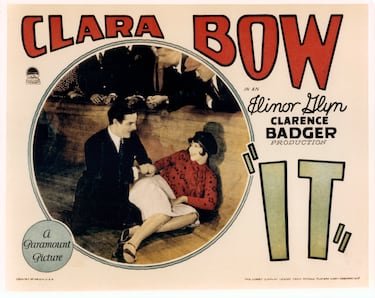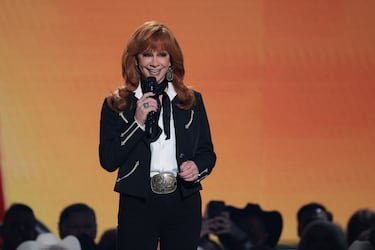While several actresses were bestowed the title (Louise Brookes, Josephine Baker, Lana Turner…), Clara Bow was Hollywood’s original ‘It Girl’, face of the Roarin’ 20s and the first true sex symbol of the silent era of cinema. Even Taylor Swift recognized she had something special enough to write a song about her.
American actress Clara Bow. Her appearance as a plucky shopgirl in the film It brought her global fame and the nickname “The It Girl”. Bow came to personify the Roaring Twenties and is described as its leading sex symbol. Photographed by Eugene Richee in 1926. pic.twitter.com/ToWJeT9bpa
— WikiVictorian (@wikivictorian) January 14, 2023
Clara Bow “was the 20s”
Brooks, her contemporary, said of her: “I thought she was the most marvelous star of the 20s, because she was the 20s, really. [Greta] Garbo came from Europe, [Gloria] Swanson was already very sophisticated, dressy and Cecile B DeMille but Clara, as she called herself, was the real Jazz Baby. She never thought she was beautiful, it was a personality contest that she won, she swept the whole country”.
Born in Brooklyn on July 29 1905, Bow’s start to life was inauspicious to put it mildly. She was born in poverty, practically on the street. Her father, although intelligent and keen, didn’t have much luck finding work and so Clara’s childhood was extremely tough, which meant she occasionally had to beg for money and food.
“Nobody wanted me. I was always alone and afraid,” she recalled. “I never had a doll growing up — not even once. I didn’t have clothes, and many times, I went to bed without anything to eat. We were just surviving, and that was it. Other girls kept their distance because of how poorly I was dressed. Eventually, I figured girls weren’t all that kind, so I gave the boys in the neighborhood a shot. I turned into a tomboy — playing baseball, football, and even picking up boxing.”
[embedded content]
Hollywood beckons
Her life took a turn when she won a talent contest and started getting small roles in films – usually playing a tomboy. A week before her 18th birthday, she set off for Hollywood, where she was contracted by movie producer B. P. Schulberg.
Clara’s boyish, flapper look was all the rage – she had the looks, plus a very natural, free-spirited personality; all of that together gave her a magnetic appeal. There was something about her that you couldn’t quite put your finger on – whatever it was, she had ‘it’.

Appearances in Schulberg’s movies: Black Oxen (1923) and Wine (1924) helped to establish her but it would be her roles in Mantrap (1926), Wings (1927) and It (1927) that made Bow the biggest movie star of the era.
Bu the turn of the decade Clara was starting to struggle with the pressures of fame, and at the same time, Schulberg appeared to be losing interest in her. A gambling addiction left her heavily in debt – not that she cared too much about money anyway.
Clara Bow’s final movie
She appeared in Frank Lloyd’s Hoopla in 1932, which turned out to be her final movie. She retired soon after, and after marrying and having a family with husband Rex Bell, Clara spent the rest of her life as a recluse, battling mental illness and her inner demons. She passed away September 27, 1965 aged just 60.
Tuesday is the 120th anniversary of Clara Bow’s birth – though there have been many It Girls during the past century, she was the first, the original and some would say the best.
Get your game on! Whether you’re into NFL touchdowns, NBA buzzer-beaters, world-class soccer goals, or MLB home runs, our app has it all.
Dive into live coverage, expert insights, breaking news, exclusive videos, and more – plus, stay updated on the latest in current affairs and entertainment. Download now for all-access coverage, right at your fingertips – anytime, anywhere.



